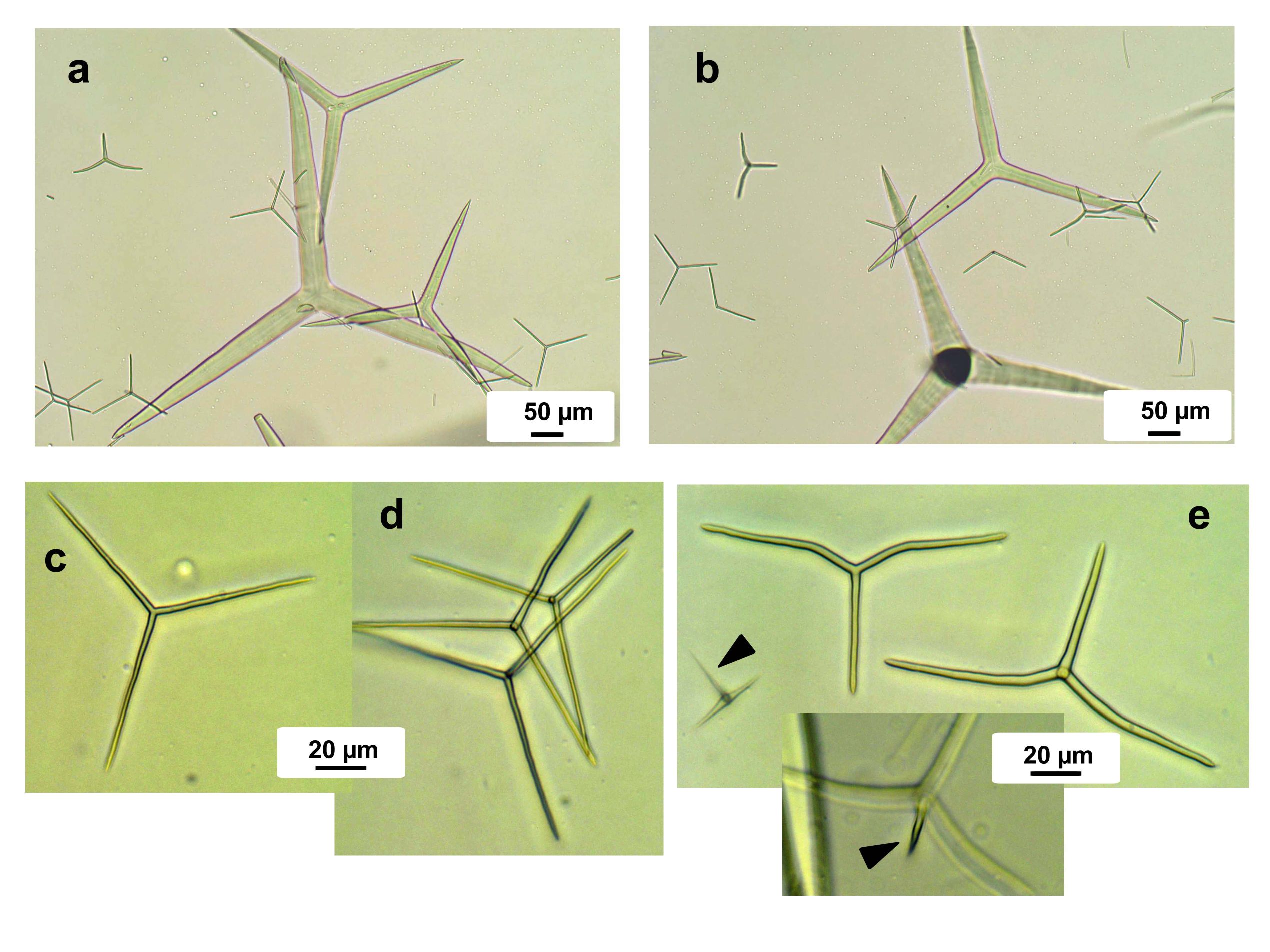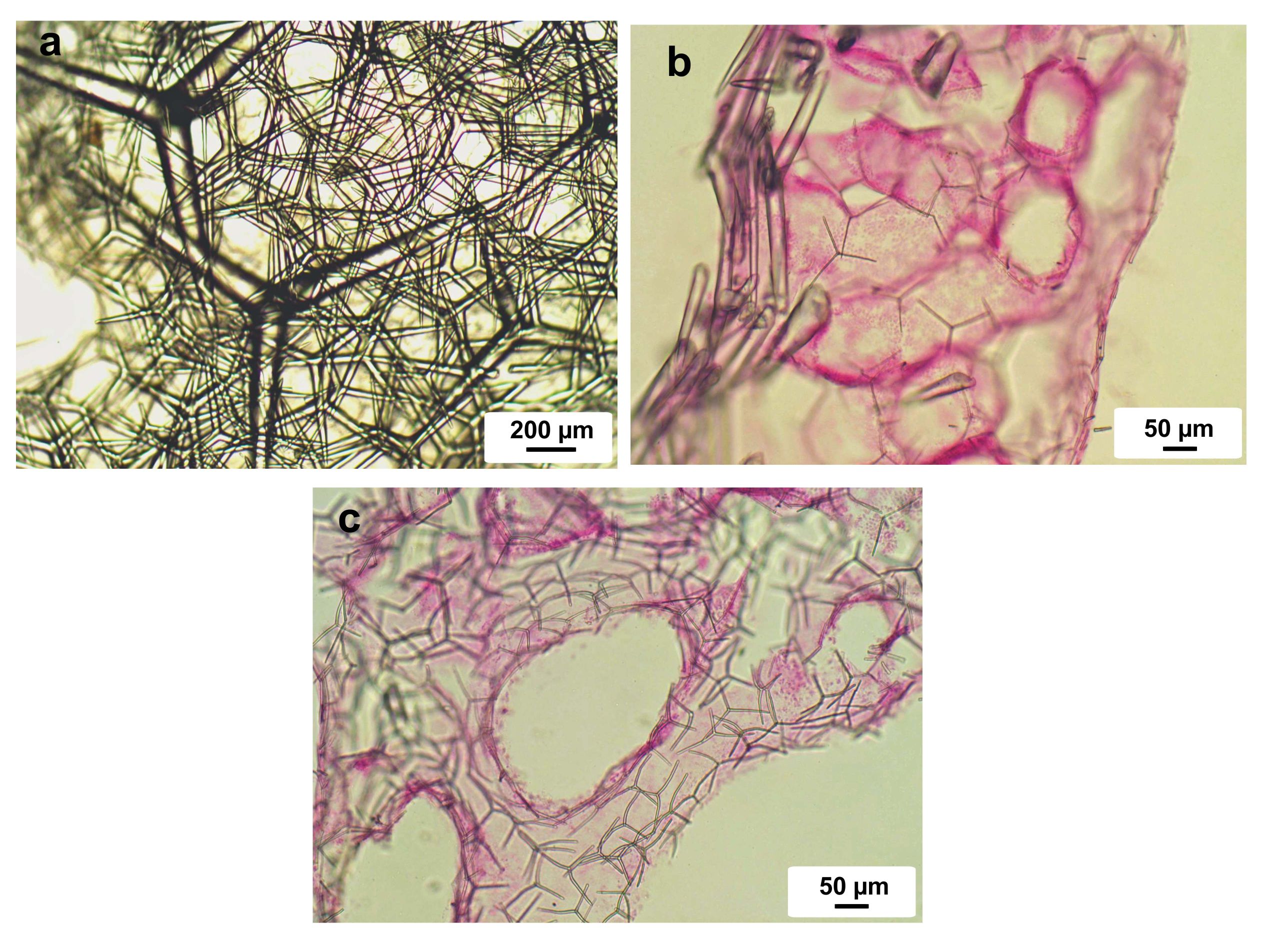the Sponge Guide - www.spongeguide.org
Observed Characteristics:
pink-lilac
tube
crumbly
Panama
Species Description and Notes
Description: (Modified from Lanna et al., 2009) Groups of coalescing tubes, mostly interconnected at the base and ramifying upwards, each tube up to 5 mm wide and 1-2 cm long. The whole assemblage of tubes attains up to 8-10 cm in length or width, and about 5 cm in height. Tubes are thin and show a slightly expanded thin collar at the end in the osculum. Color light pink. Consistency fragile, crumbly, friable. Skeleton composed of an external cortex of tangentially placed large to giant triactines and tetractines II. The choanosomal canals and the internal wall of the tubes are paved by smaller tri and tetractines I, regular and sagittal, which are also loosely dispersed throughout the tissue. Spicules: choanosomal, small tri- and tetractines I, regular (equiradiate and equiangular) or sagittal (one of the angles between the paired actines larger), thin, with cylindrical actines and blunt tips. Basal actines are 36-101 µm long by 3.3-6.4 µm wide. Apical actines of tetractines 26-84 by 4-5 µm. Cortical large tri- and tetractines II, equiradiate and equiangular, with conical actines and acute tips, 195-542 µm long bt 40 µm wide at the base; tetractines with a shorter apical actine.
Notes: We have observed this species in deep overhanging rock walls at Bocas del Toro, Panama. It was originally described from Florida and then throughout the world, but the conspecificity of such disparate populations has been questioned and there is need for molecular studies to clarify it; there are Greater Caribbean records from Florida, Bermuda, Panama (this guide) and Brazil (see Lanna et al., 2009).
Author Reference: Haeckel, 1872
Link: World Porifera Database
Tissue and Spicule Images

Spicule Images: a) And b) large tri and tetractines II (cortical) and smaller tri and tetractines I, normal and sagittal (choanosomal); c) and d) tri- an tetractines I (choanosomal); e) sagittal tri and tetractines, showing the apical actine of a tetractine (arrow in inset). Photos courtesy of Michelle Klautau. Sample from the Bocas del Toro, Panama, by Cristina Diaz.
Source Specimen: http://www.spongeguide.org/ thumbs/00115/01847.JPG

Tissue Images: a) Top view of the surface cortex; b) histological cross section of a tube; c) choanosome. Sample from Bocas del Toro, Panama. Photos courtesy of Michelle Klautau.
Source Specimen: http://www.spongeguide.org/ thumbs/00115/01847.JPG
Images
Leucaltis clathria
Location: Panama, Bocas del Toro
Photographer: Sven Zea
Location: Panama, Bocas del Toro
Photographer: Sven Zea
Location: Panama, Bocas del Toro
Photographer: Cristina Diaz